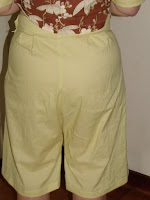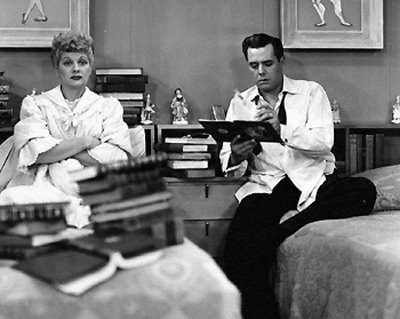The vintage pajamas that I have been working on for months (or more appropriately, NOT working on) are finished! Besides not scheduling time to actually work on the sewing, what took so long? Two words: alteration frustration.
The reason I do not consider myself an advanced sewist is in part because of my limited fitting abilities. Granted, I am getting much better about using the appropriate pattern size to begin with and altering to my specific measurements, but I don't often know right off the bat what or how to do them. I have two reference books that I use in addition to online tutorials and the wealth of knowledge at Pattern Review: Singer's The Perfect Fit and Reader's Digest Complete Guide to Sewing.
I am generally a visual person, so I have to see things in my head and visualize the flat pieces bending and morphing into their 3D shapes in order to understand. 1950's patterns to do not have the best directions.
I did a flat measurement of the pattern pieces to get an idea of the finished garment measurements. Modern patterns usually include these, but not always vintage. The trousers, as I thought, were significantly smaller than my measurements. I needed to add 4 inches to the waist, 5 1/2 inches to the hip, 2 inches to the thigh and shorten them by 3 inches. These additions were complicated by the fact that the trousers pattern was once piece (no side seams!) and had the weirdest crotch profile I have ever seen.
The pattern looks almost like it is upside-down, but it is not. (Maybe they would have fit better that way?) As designed, the crotch would hang down to my knees! Did they design them this way for modesty or did they just not know how to design trousers for women?
Given the one piece pattern, I could not simply add extra to the hip side seams as my fitting books were showing me. So after studying the instructions and pictures, munching on some peanuts making sketches with my fitting book perched atop my head (osmosis?) I finally figured it out. To preserve the crotch length (even though it was weird, it was long enough), I split the pattern down the middle and added 2 inches (for a total of 4" at waist) and added an additional 3/8" width at the crotch seam for the 1 1/2 inches needed at the hips. I added 1" at the inner thigh and left the length for the time being.
The tissue fit of these changes was fine in the hip area, but, as I suspected, the crotch was 3-4 inches too low. After bringing up the depth, I followed the Reader's Digest guide for adding length by utilizing both the crotch point and crotch seam methods. Now my funky crotch line looks more like this.
To alter the waistband (aka "belt") I added 1 1/8" to the side seam between the front and back notch and 1 3/4 inches between the back notches for 2 7/8 inches total. This proved to be wrong on my part, but more about that later.
I knew that the bodice would not be too difficult to alter. The flat measurement revealed that the top had a generous amount of ease (9 inches at the bust line and about 7 inches in the hip area). As I said in my previous post, a 34 bust is just about right for me. After all of that drama with the trousers, I was delighted to find that I did not need to make a single alteration to the bodice. Not. One. Even the neck and arms fit beautifully with plenty of ease built in!

I felt confident enough with the fit of both pieces to cut out my fashion fabric. I had originally wanted to use a coppery brown to match the background of the Amy Butler fabric, but once it arrived it did not match nearly as well as I thought it did online. (That's one of the dangers of online fabric shopping). At my local fabric store I came across this lightweight cotton in a lovely chartreuse. It is not a color that I would have ever chose, but I really like it! It has a very vintage look to it. I also used the chartreuse for the accent pieces of the top. Some lovely yellow buttons, a lovely yellow thread and zipper and I was on my way!
Next up the construction...
My previous post on this pattern:
Walk Through a Vintage Pattern .



















